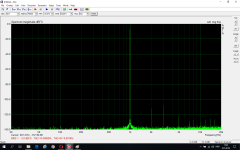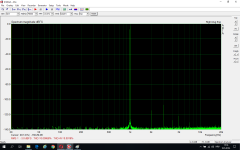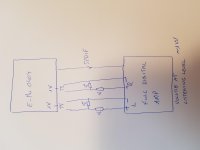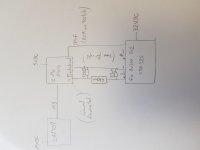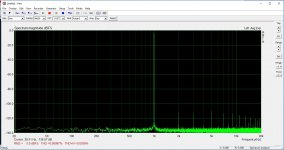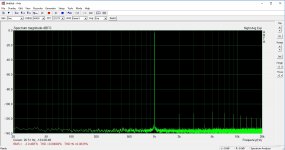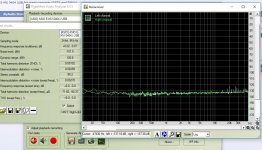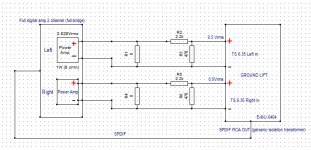Yeap, it was missing from me!
You can improve your results with the following:
1) set the Avg from Linear to Exp. You will have better THD+N
2) set the FFT from 16384 to 131072 gradually, if you want to have a lower noise floor to see more details. But, the refresh rate is going to down!
You can improve your results with the following:
1) set the Avg from Linear to Exp. You will have better THD+N
2) set the FFT from 16384 to 131072 gradually, if you want to have a lower noise floor to see more details. But, the refresh rate is going to down!
Some new results with the following setup (everything else remain the same):
- Avg set from Linear to Exp
- FFT set from 16384 to 131072 gradually (time consuming, occasional burst)
Results:
- left channel THD went from 0,0008 down to 0,00068%, THD+N from 0,0020 to 0,0019%
- right channel THD went from 0,00069 down to 0,00068%, THD+N remain the same 0,0019
- Noise floor on both channels went from ~133 to ~140dB
It seems everything end up as lemon correctly predicted
- Avg set from Linear to Exp
- FFT set from 16384 to 131072 gradually (time consuming, occasional burst)
Results:
- left channel THD went from 0,0008 down to 0,00068%, THD+N from 0,0020 to 0,0019%
- right channel THD went from 0,00069 down to 0,00068%, THD+N remain the same 0,0019
- Noise floor on both channels went from ~133 to ~140dB
It seems everything end up as lemon correctly predicted

Attachments
That's OK.
You have a -103.35dB THD both of channel.
At the THD+N you measure the output in reality, as this has 0.001% level vs 0.0009% of input.
You are OK and you can use the 0404 as a basic measurement equipment.
You can use the bigger FFT, when you want a lower noise level and you want to see more details to lower signals.
Take care with the level of input for protection of 0404 input.
You need a ladder attenuator or something like and take care the level that is at 0.5-1Vrms always.
You have a -103.35dB THD both of channel.
At the THD+N you measure the output in reality, as this has 0.001% level vs 0.0009% of input.
You are OK and you can use the 0404 as a basic measurement equipment.
You can use the bigger FFT, when you want a lower noise level and you want to see more details to lower signals.
Take care with the level of input for protection of 0404 input.
You need a ladder attenuator or something like and take care the level that is at 0.5-1Vrms always.
Hi,
I just get the e-mu 0404 USB interface.
I plan to use it to measure my full digital amplifier.
I have some questions about how to connect the speaker output to the em-u 0404. (See picture)
The volume of the amplifier is set to listening level, about 1W per channel.
The Voltage on the speaker output should be about 4V max. The voltage divider should lower the voltage to 1V.
Is that the way to do it ?
Many thanks for your help,
David
I just get the e-mu 0404 USB interface.
I plan to use it to measure my full digital amplifier.
I have some questions about how to connect the speaker output to the em-u 0404. (See picture)
The volume of the amplifier is set to listening level, about 1W per channel.
The Voltage on the speaker output should be about 4V max. The voltage divider should lower the voltage to 1V.
Is that the way to do it ?
Many thanks for your help,
David
Attachments
Digital amps (unlike most analog ones) have bridge outputs. The "speaker -" output is not connected to 0V of the input.
For measuring bridge outputs you need either balanced inputs, or unbalanced inputs freely floating against the amp (powered by battery at best since class II power sources tend to have capacitive coupling which usually affects the measurements).
Does that card have balanced line-level inputs? If I understand tts specs correctly, it has only unbalanced inputs for line level.
Balanced inputs need balanced voltage dividers e.g. https://www.diyaudio.com/forums/pas...ier-distortion-measurement-4.html#post3735528
If you wanted to measure in linux, you can easily configure a virtual balanced input from two unbalanced inputs Virtual balanced in/out from regular soundcard in linux - results . My tests show very nice performance of such zero-cost setup.
For measuring bridge outputs you need either balanced inputs, or unbalanced inputs freely floating against the amp (powered by battery at best since class II power sources tend to have capacitive coupling which usually affects the measurements).
Does that card have balanced line-level inputs? If I understand tts specs correctly, it has only unbalanced inputs for line level.
Balanced inputs need balanced voltage dividers e.g. https://www.diyaudio.com/forums/pas...ier-distortion-measurement-4.html#post3735528
If you wanted to measure in linux, you can easily configure a virtual balanced input from two unbalanced inputs Virtual balanced in/out from regular soundcard in linux - results . My tests show very nice performance of such zero-cost setup.
Try not run the digital amp without any output load https://www.diyaudio.com/forums/class-d/237086-tpa3116d2-amp.html#post3528020 or use some protection measure. I have just seen a TPA3116 blow the unloaded output stage.
Thank you. I have no linux set up..
I have several amps to measure with several tweaks on the power supply :
Fx 802, fx d2160, smsl ad18.
The goal is to compare them.
The e-mu 0404 USB has line level balanced and unbalanced inputs.
It also has a switch to remove the grounding on the inputs
(Page 48 on the manual)
Would it be safe to connect the speaker outputs to an 8 ohms resistor, then in parallel a voltage divider to lower the volage at 1V ( 5 kohm and 500Ohm for example) and the TS unbalanced at the divided voltage to the line in of the e-mu with ground switch to No ground ?
I have several amps to measure with several tweaks on the power supply :
Fx 802, fx d2160, smsl ad18.
The goal is to compare them.
The e-mu 0404 USB has line level balanced and unbalanced inputs.
It also has a switch to remove the grounding on the inputs
(Page 48 on the manual)
Would it be safe to connect the speaker outputs to an 8 ohms resistor, then in parallel a voltage divider to lower the volage at 1V ( 5 kohm and 500Ohm for example) and the TS unbalanced at the divided voltage to the line in of the e-mu with ground switch to No ground ?
Last edited:
Thanks. Please include PSU connections (laptop, amp), PE wires etc. USB connection has two lines - data (dual line, but that is not important here) + ground too.
SPDIF - TOSLINK is fully isolated, coax - is it galvanically isolated (signal transformer) or ground connected?
Using unbalanced line-in with ground disconnected - where is the return wire for the signal from the amp? Why unbalanced inputs if your soundcard offers balanced ones and the amp has balanced outputs (bridged)? You will need balanced voltage dividers from them.
SPDIF - TOSLINK is fully isolated, coax - is it galvanically isolated (signal transformer) or ground connected?
Using unbalanced line-in with ground disconnected - where is the return wire for the signal from the amp? Why unbalanced inputs if your soundcard offers balanced ones and the amp has balanced outputs (bridged)? You will need balanced voltage dividers from them.
The EMU0404 can be battery powered (I do that for some measurements). The laptop can be run just on internal battery. That would avoid any ground loop, such as from 32Vdc supply if it was mains powered supply. Using the ground lift on the EMU may alleviate parasitic digital noise from laptop and USB comms paths. But there is still the chance of nearby mains cables and noisy devices like LED lamps.
Running laptop on battery, EMU powered by laptop (it is connected to the laptop through USB anyway so EMU running on battery eliminates no loop). That would solve ground loops through power lines.
TOSLINK or SPDIF through transformer (+ confirming it really isolates) would allow using single-ended EMU inputs and simple voltage divider. If not (the amp GND connected to EMU GND), you need balanced inputs and balanced dividers for the amp balanced outputs.
TOSLINK or SPDIF through transformer (+ confirming it really isolates) would allow using single-ended EMU inputs and simple voltage divider. If not (the amp GND connected to EMU GND), you need balanced inputs and balanced dividers for the amp balanced outputs.
Hi,
It looks like the E-MU 0404 needs an external power supply.
I made some loop measurments with ARTA ( pics 1 and 2) and RMAA (pic 3), please tell me if it looks good for measurments purpose.
I made another drawing (pic 4) for the measurments of the amplifier I plan to make.
David
It looks like the E-MU 0404 needs an external power supply.
I made some loop measurments with ARTA ( pics 1 and 2) and RMAA (pic 3), please tell me if it looks good for measurments purpose.
I made another drawing (pic 4) for the measurments of the amplifier I plan to make.
David
Attachments
Thank you, I see the potential problem.
There are 2 GROUND LIFT, one for each line level input.
It is supposed to disconect the GROUND wire of each channel from the GROUND of the e-mu 0404.
I will have to test that.
The E-MU 0404 uses the same plugs for balanced signal and unbalanced signal.
There are 2 GROUND LIFT, one for each line level input.
It is supposed to disconect the GROUND wire of each channel from the GROUND of the e-mu 0404.
I will have to test that.
The E-MU 0404 uses the same plugs for balanced signal and unbalanced signal.
- Status
- This old topic is closed. If you want to reopen this topic, contact a moderator using the "Report Post" button.
- Home
- Design & Build
- Equipment & Tools
- Issues using E-MU 0404 USB for measurements (ARTA and RMAA)
